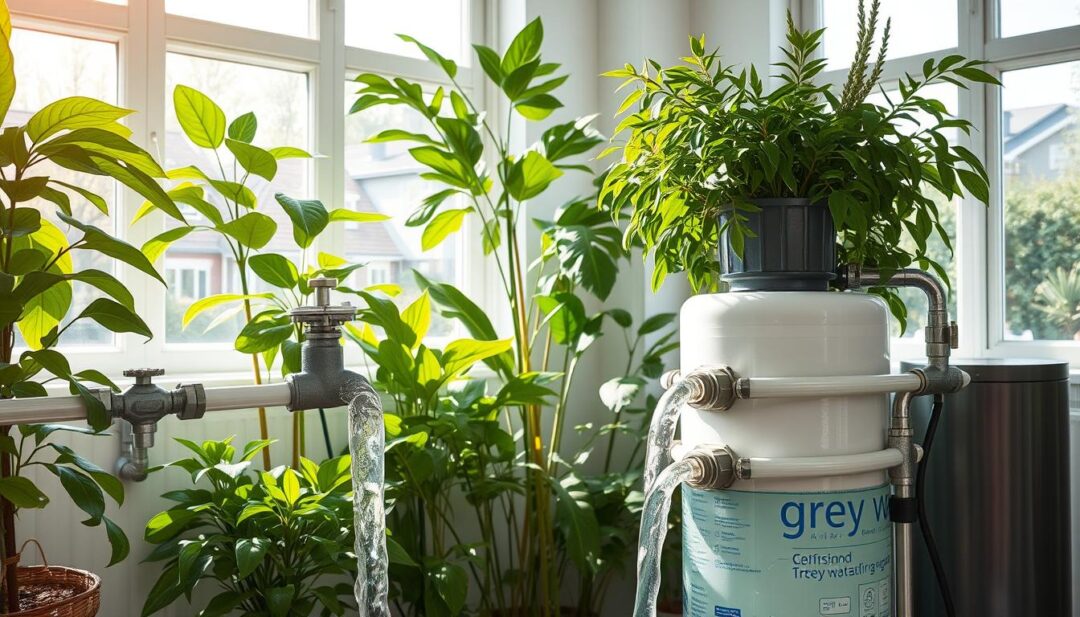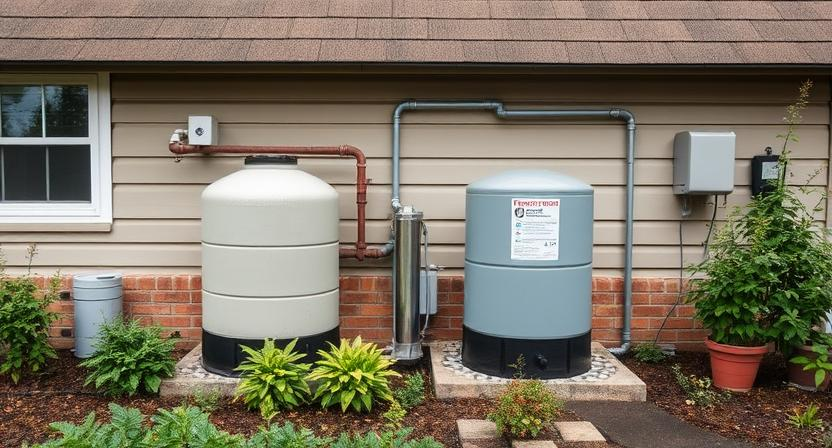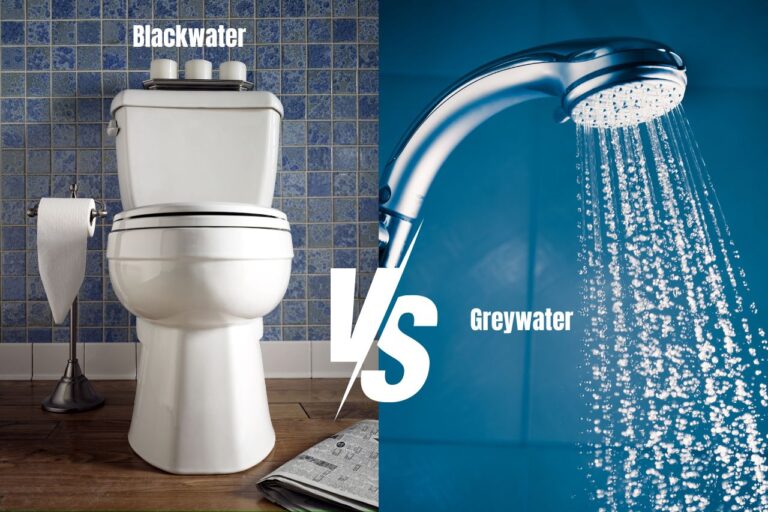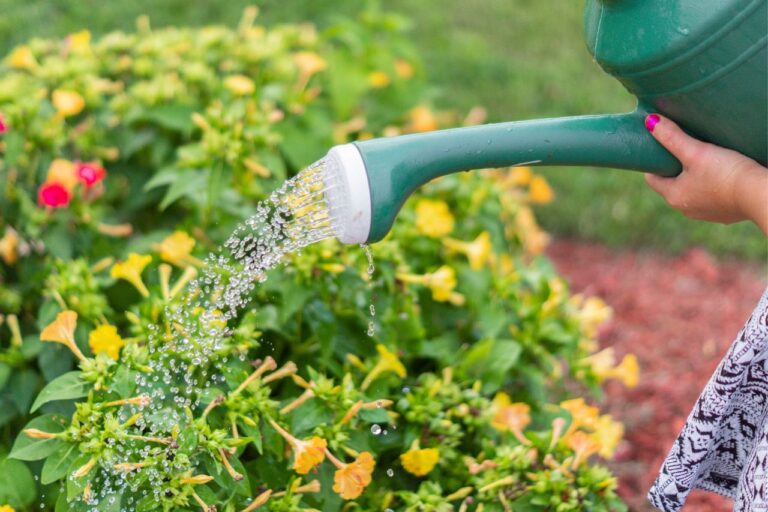Guide to Installing a Residential Grey Water System
Installing a grey water system lets homes reuse water from sinks, showers, and laundry. This eco-friendly move cuts down on freshwater use and eases the burden on sewage systems. This guide will help homeowners plan, pick the right equipment, and install a grey water system. With the right setup, these systems can be a big help in saving the planet and cutting down on utility bills.

Key Takeaways
- Grey water systems save up to 50% of household water use.
- Systems reduce reliance on potable water for irrigation and flushing.
- Proper filtration prevents contamination and extends system lifespan.
- Local building codes must be followed for legal compliance.
- Cost savings grow with long-term water bill reductions.
Understanding Residential Grey Water Systems
Residential grey water systems collect water from sinks, showers, and washing machines. They turn this water into a resource for irrigation or flushing. This helps reduce freshwater use and eases the burden on local water supplies.
What is a grey water system?
Greywater systems collect water from sinks, showers, and washing machines, but not toilet wastewater. They filter out particles and contaminants. Then, they redirect the water for uses like landscaping.
Key parts include filtration units, pumps, and distribution pipes.
- Sinks, showers, and laundry are primary sources
- Filtration removes soap, hair, and debris
- Reused for outdoor irrigation or toilet flushing
Benefits of eco-friendly water reuse
“Greywater recycling can reduce household water use by up to 30%.”
Using eco-friendly water reuse has many benefits:
- Environmental Impact: It reduces demand on municipal water supplies and cuts wastewater sent to treatment plants.
- Cost Savings: It lowers monthly water bills and outdoor irrigation costs.
- Resource Efficiency: It extends the lifecycle of water in home ecosystems.
| Aspect | Traditional Use | Greywater System |
|---|---|---|
| Water Source | Entirely freshwater | Reuses 25–50% of household water |
| Environmental Impact | Higher energy use for treatment | Reduces freshwater depletion |
| Cost Over Time | Rising utility bills | Up to 30% savings annually |
Planning Your Eco-Friendly Water Reuse Project
Good planning is key for a residential greywater system that works well. First, figure out how much water you use daily. This includes water from sinks, showers, and washing machines. Make sure your system is the right size to avoid waste.
- Map drainage paths: Place irrigation zones downhill to use gravity, cutting energy costs.
- Verify local codes: Many states require permits. Contact your city’s environmental health department before purchasing parts.
- Budget for materials: Include pipes, filters, and valves in your expense plan. Prioritize durability for long-term use.
Soil type and plant needs shape system design. Sandy soil drains faster than clay, affecting how you distribute greywater. Use native plants tolerant of reused water to reduce maintenance. Always route greywater away from drinking water supplies to prevent contamination.
Professional consultation is vital. Licensed plumbers can identify plumbing code requirements, while landscapers advise on irrigation patterns. Budget $500–$2,000 for materials depending on home size. Online tools like the EPA’s Greywater Calculator estimate system needs based on fixture usage.
A clear plan avoids costly mistakes. Start with these steps to build a functional residential greywater system that aligns with local laws and household demands.
Choosing the Right Greywater Recycling Equipment
Choosing the right equipment is key for a greywater recycling system to work well and safely. It must handle water flow, filtration, and distribution. It also needs to meet your home’s specific needs.
Key Components of a Residential System
- Filters: Screens or sediment traps remove hair, soap scum, and debris. Look for models like the Aqus Filter, designed for residential use.
- Pumps: Submersible pumps, such as those from Grundfos, move wastewater to storage or irrigation zones.
- Storage Tanks: UV-resistant polyethylene tanks, like those from Rainwater Harvesting Systems, store treated water for reuse.
- Piping: Durable PVC or HDPE pipes prevent corrosion, while distribution networks require check valves to avoid backflow.
System Selection Criteria and Options
Compare systems based on:
- Capacity: Match the system to your household’s daily water usage.
- Material Durability: Choose corrosion-resistant materials for long-term performance.
- Maintenance: Look for easy-to clean parts and automated features like automatic flushing systems.
- Budget: Options range from DIY kits (e.g., $300–$500) to full installations ($2,000+).
Pre-built systems like the Brac Greywater Recycling System offer all-in-one solutions, while modular kits allow customization.
DIY Greywater System: Preparation and Tools
Before starting a diy greywater system project, getting ready and choosing the right tools are key. Good planning keeps you safe and follows local rules. First, look up local codes and get the needed permits. This part covers the basics to steer clear of common mistakes.
Essential Tools for Installation
For a diy greywater system, you’ll need:
- PVC pipes and connectors (e.g., available at Home Depot)
- Shovels and trenching tools
- Measuring tape and level
- Plumbing sealants and gaskets
- Safety goggles and gloves
Safety Precautions and Best Practices
“Safety starts with knowledge,” advises the EPA. “Follow guidelines to prevent contamination risks.”
Important safety steps:
- Always wear protective gear.
- Check soil permeability before digging trenches.
- Use non-corrosive materials to avoid pipe damage.
- Consult local health department guidelines.
Good preparation makes a tough project easier. Focus on quality materials and follow safety rules for a working, code-compliant diy greywater system.
Installation Process for Residential Grey Water System
Starting your project involves setting up carefully. Here’s how to install a system that works well and safely:
Step-by-step guide to installation
- Disconnect old drainage pipes near showers, sinks, or washing machines. Use PVC connectors to redirect water to a collection tank.
- Install a filter screen at the drain outlet to catch hair and debris. Brands like Brac Systems have kits for homes.
- Connect pipes to a storage tank using gravity or a pump for uphill. Make sure slopes are at least 1/4 inch per foot.
- Link irrigation lines to your garden or landscaping, but not to natural waterways.
- Test the system by running water through it. Use a pressure gauge to check for leaks.
Overcoming common installation challenges
Common problems and solutions:
| Problem | Solution |
|---|---|
| Plumbing not aligned with system design | Adjust pipe lengths or use adapters for mismatched fittings |
| Leaks at connections | Apply Teflon tape and tighten fittings with a pipe wrench |
| Insufficient drainage slope | Add supports under pipes to raise sections by 1-2 inches |
Always check local laws before finishing setup. If unsure, call a licensed plumber for help.
Eco-Friendly Water Reuse Maintenance Tips
Regular upkeep keeps your grey water system running well and safely. Follow these steps to make it last longer and keep it eco-friendly.

- Check filters weekly to remove debris and prevent clogs.
- Flush pipes monthly with a mixture of water and white vinegar to dissolve buildup.
- Inspect pumps and valves quarterly for wear and tear.
“Neglecting maintenance can reduce system efficiency by up to 30% within a year.”
Clean tanks biannually using eco-safe detergents. Avoid harsh chemicals that harm plants or plumbing. Monitor water flow rates—if they slow, address blockages immediately.
Optimize performance with these tips:
- Track usage patterns to balance water distribution.
- Use enzyme treatments monthly to break down organic matter.
- Keep records of maintenance dates for future reference.
Follow local regulations by documenting all maintenance activities. Regular upkeep keeps the system working well and meets environmental standards. Small steps today prevent costly repairs later.
Greywater Treatment and Filtration System Options
Effective greywater filtration keeps recycled water safe for use. Today’s systems use advanced tech to clean water well. They also protect the environment. The best choice depends on your home’s needs and local laws.
| Method | How It Works | Examples |
|---|---|---|
| Mechanical Filters | Strain particles using screens or sieves | BioMicrobics residential units |
| Sand Filters | Layered sand beds trap organic material | Fluence Corporation systems |
| UV Treatment | Destroys pathogens with ultraviolet light | Sterilight disinfection modules |
Overview of filtration methods
- Mechanical filters remove large debris like hair and grease
- Sand filters use natural media to absorb smaller particles
- UV systems kill bacteria without chemicals
Treatment best practices and optimization
- Install pre-filters to protect main filtration components
- Flush systems weekly to prevent clogging
- Pair with pH balancing additives for optimal chemical neutrality
Regular upkeep makes your greywater treatment system last longer. Check water quality every month to meet . Combining filtration with good drainage boosts water recycling.
Optimizing Greywater Irrigation Systems
Getting the most out of a greywater irrigation system begins with good design. Place drip lines close to plant roots and avoid spraying hard surfaces too much. This ensures water goes where it’s needed most. Adjust the irrigation schedule based on the season and soil moisture.
Well-designed greywater systems can cut outdoor water use by up to 30%, saving resources and lowering costs over time.
- Use drought-resistant plants like lavender or succulents that thrive with recycled water.
- Install soil moisture sensors to prevent overwatering and system strain.
- Route greywater to ornamental landscapes instead of vegetable gardens to comply with safety standards.

Regularly check pipes and filters to avoid clogs from hair, oils, or soap. Using mulch with the greywater irrigation system helps keep moisture in and reduces evaporation. Always check local laws to see where you can use greywater, as some places don’t allow it on food crops.
Pairing the greywater irrigation system with low-flow fixtures and biodegradable soaps boosts sustainability. A well-optimized system can change how we use water at home and help our gardens grow.
Sustainable Water Management and Greywater Regulations
Following local rules is key for greywater systems to work safely and legally. This helps protect the environment and public health.
Local governments have rules for greywater use. First, look up state and local codes. For instance, California’s Title 22 and Texas’ Water Development Board have clear guidelines.
Understanding local guidelines
- Visit state environmental agencies like the EPA or regional DEQ websites for system design and discharge limits.
- Compare federal and local codes. Some places limit irrigation zones or need specific filtration.
- Look at case studies: Arizona lets small-scale systems without permits, while Oregon requires professional install.
Permitting requirements for residential systems
Getting permits involves these steps:
- Send plans to local building departments, including plumbing and filtration details.
- Go to inspections during installation to check for code compliance.
- Keep records of permits for future use.
“Proper permitting prevents legal issues and ensures systems meet health and safety standards.” – U.S. Environmental Protection Agency
Keeping up with permits and guidelines is crucial for long-term sustainability. Always check for updates in regulations to follow the latest in sustainable water management.
Conclusion
A residential greywater system helps save water by reusing it. It’s good for the environment and can save money. It turns old water into something useful for plants or other non-drinking needs.
Following local rules is key to using greywater safely. The EPA’s rules help keep everyone and the environment safe. Keeping the system clean and well-maintained makes it last longer and saves more water.
Using greywater is a big step towards saving water. Look for certified parts and talk to local experts for the best advice. Making small changes now can help make a big difference for our planet.
Frequently Asked Questions
What is a grey water system?
A grey water system collects and reuses water from sinks, showers, and laundry. It doesn’t use toilet waste. This makes water use more eco-friendly and supports sustainable water management.
What are the benefits of greywater recycling?
Greywater recycling cuts down on freshwater use and lowers bills. It also reduces environmental harm by lessening wastewater. It’s a way to manage water sustainably and use it for irrigation and other non-drinking needs.
How do I choose the right greywater treatment system for my home?
To pick the right system, consider your water needs and your home’s plumbing. Also, check local laws. Look for systems that filter well and fit your home’s setup.
Can I install a DIY greywater system myself?
Yes, many people install DIY greywater systems. Make sure you have the right tools and know the local rules. Safety is key, and a good guide can help a lot.
What are essential safety precautions during installation?
When installing, wear protective gear and turn off water sources. Also, ensure good air flow. Knowing local building codes is important to avoid problems.
How do I maintain my greywater irrigation system?
To keep your system running well, check for blockages, clean filters, and watch its performance. Regular care helps it work better and last longer.
What types of greywater filtration methods are available?
There are many filtration options, like simple filters, sand filters, and membrane systems. Each has its own benefits and fits different needs.
Are there any guidelines for sustainable water management using grey water?
Yes, there are guidelines. They include knowing local rules, designing for efficient water use, and being aware of health and safety issues.
What are the permitting requirements for installing a grey water system?
Permitting rules differ by area. Homeowners should contact local health or building departments for specific rules on installation, upkeep, and grey water use.



